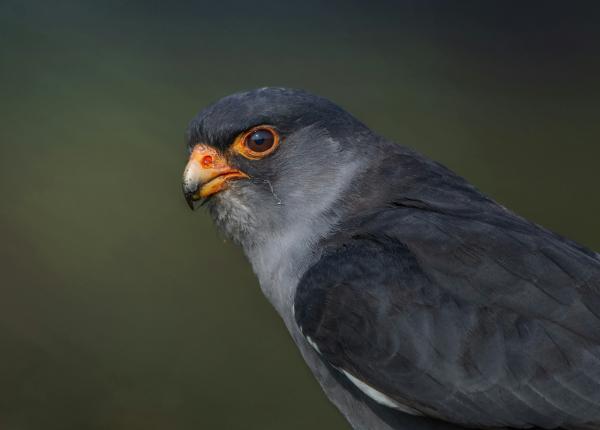Did You Know?
- During migration, the Amur Falcon undertakes the longest regular overwater passage of any raptor, crossing over the Indian Ocean between southwestern India and tropical East Africa, a journey of more than 4,000 km
- This falcon is known by a few other names such as Eastern Red-footed Falcon, Eastern Red-footed Kestrel, Manchurian Falcon, and Red-legged Falcon
How The Peregrine Falcon is Helping
Though The Peregrine Fund does not work directly with Amur Falcons, our efforts in scientific research, habitat conservation, education, and community development help conserve birds of prey around the world. We also supply literature to researchers from our avian research library, which helps scientists around the world gather and share important information on raptor conservation. Additionally, our support of the Global Raptor Information Network gives raptor researchers tools to more efficiently conduct their own studies while contributing to a global program. It also provides citizen scientists a way to participate in raptor science and conservation.
Where They Live
The Amur Falcon breeds in east Asia and overwinters in southern Africa. When on the breeding grounds, it can be found in open areas, woodland edge, wooded steppe, and agricultural areas. In its winter range in southern Africa, this species inhabits moist grasslands and open areas in woodland and is less common in the semi-arid habitats favored by the closely related Red-footed Kestrel.
What They Do
Amur Falcons are long-distance migrants traveling from their breeding grounds in eastern Asia to their wintering grounds in Southern Africa. During migration, they travel in large groups, sometimes numbering 1,000s of individuals. Thanks to strong monsoon tailwinds, they are able to cross the Indian Ocean, even flying at night, in around three days.
When roosting, the Amur Falcons also often roost together with Lesser Kestrels and Red-footed Falcons. In some areas, roosts of these three species may number tens of thousands of birds.
Why They Need our Help
Though the Amur Falcon is categorized as a species of Least Concern, it is facing a major threat. In one area in India, some local people trap thousands of Amur Falcons during their migration. They use large nets to capture the birds as they come in to roost. These birds are then sold as food. Conservationists are working hard to put a stop to this.
What They Eat
When in Africa, the Amur Falcon will feed on termite, ant and locust swarms, which often occur after tropical storms. They will spend time foraging around agriculture fields growing crops that attract grasshoppers and other insects. When hunting, it might perch on a telephone pole or wires searching for prey. It also spends time hovering over open areas in search of prey. When it spots something to eat, it drops to the ground to grab it. It often brings its prey to a perch in order to eat it.
Nests, Eggs, and Young
Like other falcons, Amur Falcons to not build their own nests. Instead, they use old nests built by other birds including those of magpies, crows, and raptors. The female may lay 2-6 eggs, which are white with dense brown and reddish-brown markings. After the eggs are laid, the female will be responsible for incubating them while the male is responsible for capturing and bringing prey to the female, and eventually, the nestlings. Once the young falcons hatch, they will grow quickly and be ready to leave the nest in less than 30 days.
Amur Falcon and the World Center for Birds of Prey
Though far from the Amur Falcon's range, the World Center for Birds of Prey offers fun ways to learn about the different types of birds of prey. From introductory videos, to live raptor presentations with a few "ambassador" falcons on hand, including an Aplomado, Peregrine and Gyrfalcon, a visit to the center has a lot to offer for those interested in learning more about raptors. In addition, interactive activities, tours, interesting videos and a children's room with activities from coloring sheets to quizzes to costumes and a touch table are available for the curious mind. Knowledgeable staff and volunteers are on hand to answer any questions you may have about the Amur Falcon or any other bird of prey.
References:
Global Raptor Information Network. 2023. Species account: Amur Falcon Falco amurensis. Downloaded from http://www.globalraptors.org on 3 Jan. 2023
Orta, J., G. M. Kirwan, P. F. D. Boesman, and J. S. Marks (2020). Amur Falcon (Falco amurensis), version 1.0. In Birds of the World (J. del Hoyo, A. Elliott, J. Sargatal, D. A. Christie, and E. de Juana, Editors). Cornell Lab of Ornithology, Ithaca, NY, USA. https://doi.org/10.2173/bow.amufal1.01









